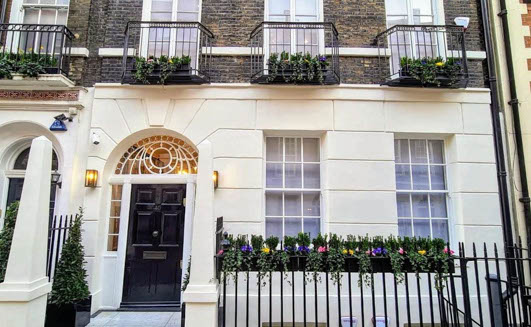
Loan Amount:
£170,000
Property Value:
£4,650,000
LTV:
26%
While we primarily deal with brokers, we’re more than happy to also work directly with borrowers. A pair of borrowers recently approached us to help with their refinancing plans.
They planned to use our funding for some light refurbishment work on an existing property. The work was primarily cosmetic, meaning there would be no structural changes, or planning permission requirements.
This should have resulted in a relatively smooth and speedy assessment. But, we came up against a key issue during our underwriting stage. Fortunately, the underwriter working on this case held a lot of experience in dealing with unexpected delays, and was able to find a solution.
Internal solutions to external problems
To ensure the client’s investment strategy and long-term plans were sound, our underwriter sought a full schedule for the works. As it was provided, we saw that the refurbishment plans fitted in with the client’s end-goals, and was fully costed. While there was a shortfall, we confirmed with the client’s that it would be covered via separate financial assets.
As we progressed through the deal however, we faced a complication and needed to find additional security. Therefore, we placed a charge on another of the clients assets. Our commitment to lending in the face of these kinds of difficulties allowed us to press ahead.
The underwriter raised this deal internally, and worked with our management team to find a solution. As we found a way to move forward with the client, and given they had a solid exit strategy along with vast property experience, we were happy to issue funding.
We’re able to address a range of complexities
Lenders are unlikely to offer much leeway at the moment. Lending criteria has tightened, costs have risen, and high street banks may only be willing to work with the most vanilla of cases.
Fortunately, we’re able to work with a broad range of complications. Difficult financial circumstances will not prevent us from supporting our borrowers.
What’s more, we’re able to work with foreign nationals, corporate setups or – as was the case with these clients – the self-employed.
If you’re struggling against an overly rigid lending landscape, we may be able to help.
FAQs
Do I have to have planning permissions before I get a loan?
No, you don’t always need to have planning permission in place before taking out a bridging loan with us. For minor or permitted development works, our lending criteria allow for funding even if full planning has not yet been secured. However, if your project involves significant structural changes, listed buildings, or works in conservation areas, planning permission may be required and we’ll discuss its status and forecast in your initial enquiry.
Do you need the entire refurbishment schedule?
Yes, we always need a clear refurbishment schedule as part of your loan application. Understanding exactly what work you plan, from scope and timing to costs, is exceptionally important. It helps us structure the loan correctly, release funds at the right time, and ensure the project remains on track.
Are there any legislations coming that might require refurbishing my BTL properties?
Yes, there are two key developments you should be aware of. Awaab’s Law is driving changes in how quickly landlords repair hazards like damp and mould. Separately, the EPC (Energy Performance Certificate) regime is being tightened, with most buy-to-let properties expected to achieve a minimum EPC rating of C within the next few years. Even if your property is currently habitable, compliance with emerging standards may require light refurbishment, or deeper works, to reach mandated thresholds. We can talk these through as part of your funding plan.
Do I always need planning permission?
No, planning permission isn’t always required. Many light refurbishment projects fall under permitted development, especially internal works such as new kitchens, bathrooms, windows, or general decorative updates. External or structural changes, loft conversions, or work to listed buildings usually need formal permission from your local council. We assess each scenario individually to understand whether consent is necessary to support funding and valuation.




